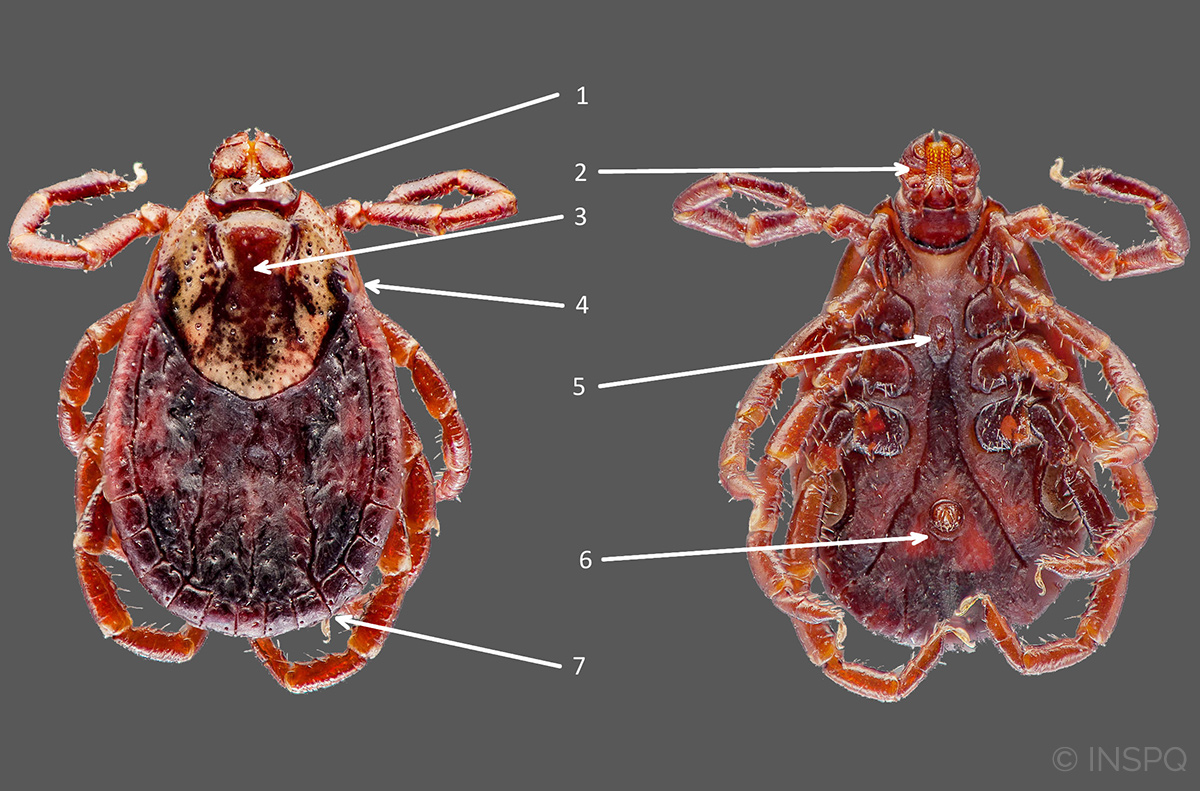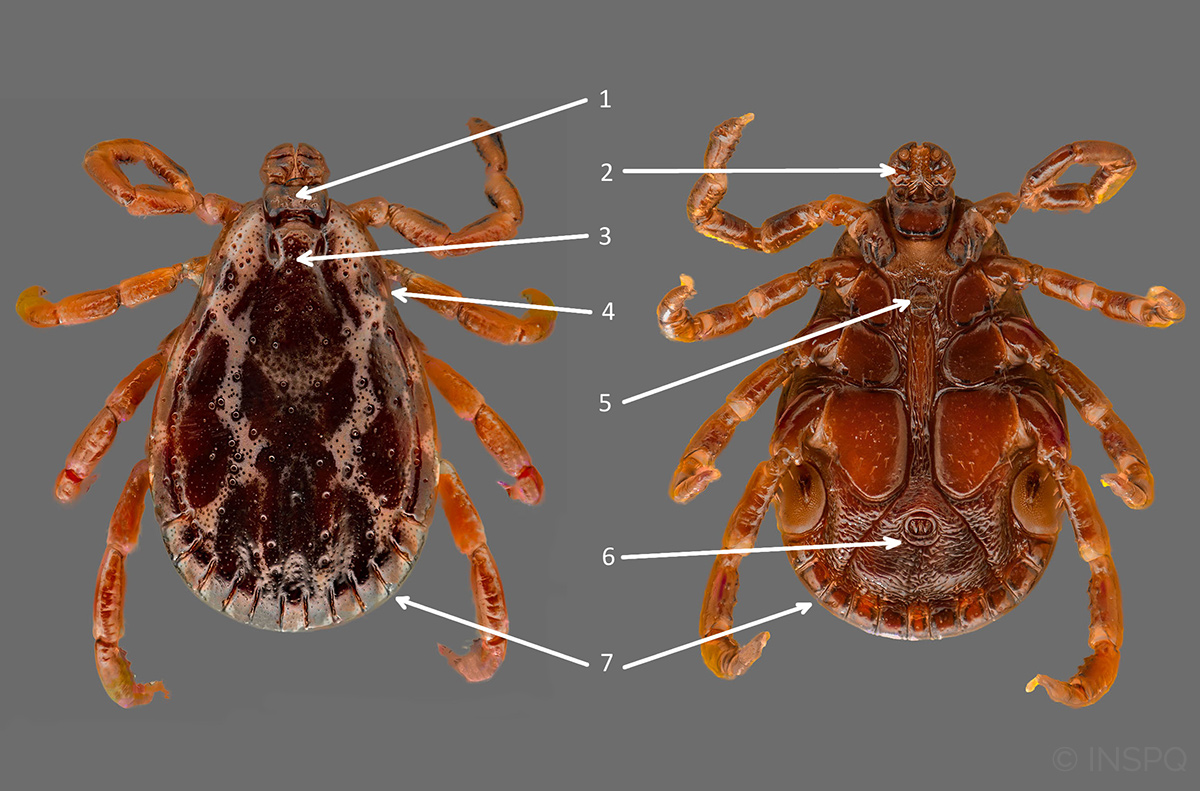Dermacentor variabilis, or the American dog tick
Clinical considerations
The Dermacentor variabilis tick is a vector of Rickettsia rickettsii, the agent responsible for Rocky Mountain spotted fever (RMSF) and Francisella tularensis, the agent responsible for tularemia. The incidence of RMSF is low throughout Canada and no cases have been reported so far in Québec. The risk of acquiring RMSF in Québec is therefore low.
Geographical distribution
A recent study suggests the presence of local populations of this tick species in southern Québec.
Morphological characteristics
Dermacentor variabilis in the female stage
Dorsal surface and ventral surface of the Dermacentor variabilis tick in the female stage.
Head
1- Base of the capitulum (right)
2- Short palps (palps are the same length as the basis capituli)
Abdomen
3- Partial shield, entire surface is ornamented and predominant colour is beige
4- Presence of eyes
5- The female stage differs from the nymph stage by the presence of a genital pore
6- Anal groove below the anus
7- Presence of festoons (band of grooves and ridges on posterior margin of abdomen)
Did you know?
There is another species of Dermacentor well established in Québec, the Dermacentor albipictus (in french), commonly known as the moose winter tick. The main host for this tick is the moose and this species rarely bites humans. Although it may weaken moose with severe infestations, Dermacentor albipictus does not transmit any diseases to humans. It can be distinguished from Dermacentor variabilis by the shape of its spiracular plates; however, this requires high-performance magnification tools and expertise that falls beyond the scope of this identification guide.
Dermacentor sp.
When it is not possible to identify the species, only the genus of the tick is reported (e.g., Dermacentor sp.).
Dermacentor variabilis in the male stage
Dorsal surface and ventral surface of the Dermacentor variabilis tick in the male stage.
Head
1- Basis capituli rectangular
2- Short palps (palps are the same length as the basis capituli)
Abdomen
3- Complete shield, entire surface is ornate, with zones alternating between beige and brown
4- Presence of eyes
5- Presence of genital pore
6- Anal groove below the anus
7- Presence of festoons (band of grooves and ridges on posterior margin of abdomen)



